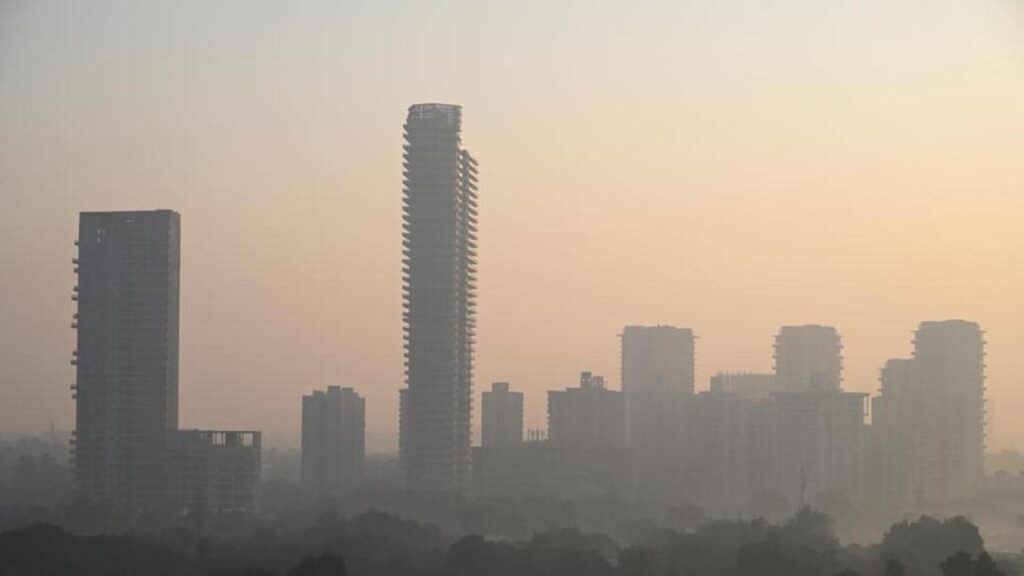Concerns raised over air quality monitors in Gurugram

Advocacy groups and experts have reported concerns over insufficient air quality monitoring stations and their inferior quality leading to unreliable data, they alleged. Although the Graded Response Action Plan (Grap) is active, coverage gaps are obstructing authorities from capturing the city’s true air quality status, activists claim, while experts attribute inconsistent data to the quality of equipments in monitoring stations.

Alarming gaps in data have been recorded at Gurugram’s monitoring stations in Sector 51 and Gwal Pahari, where activists observed missing PM2.5 readings during peak pollution periods on October 28 — the day after Diwali, when firecracker residue and construction dust escalated pollution levels. Despite visibly poor air quality, the Sector 51 station reported an AQI of just 121. Such inconsistencies, advocacy groups argue, not only impede public awareness but also render the Grap ineffective, as it relies on precise AQI readings to trigger pollution-control measures.
Gurugram currently has only four Continuous Ambient Air Quality Monitoring (CAAQM) stations, which several activists deem insufficient for a rapidly growing city. For a city like Gurugram, which faces significant air quality challenges due to rapid urbanisation and industrial activity, the number of air quality monitoring stations should be carefully calibrated to cover its dense population and diverse pollution sources.
According to the Central Pollution Control Board (CPCB) guideline, one monitoring station is recommended for every 5-10 km² in urban areas, with additional stations for areas experiencing high pollution levels. Given Gurugram’s population of over one million and its mix of residential, commercial, and industrial zones, experts suggest that the city should ideally have at least 15-20 monitoring stations to effectively track pollution patterns and meet the goals of the National Clean Air Programme (NCAP).
A former CPCB scientist, requesting anonymity emphasises, “Gurugram’s unique blend of urban development and proximity to industrial hubs requires a well-distributed network of monitors. This would ensure comprehensive data collection, enabling targeted pollution control measures and accurate public advisories, especially during peak pollution periods.”
Citizens for Clean Air, a local advocacy group, noted that these stations often suffer power failures and data discrepancies, masking the city’s true pollution levels. “We are witnessing incomplete data that doesn’t reflect the actual pollution levels. The public health risks are high, and unmonitored areas need urgent attention,” said Ruchika Sethi Takkar, a member of the group.
Meanwhile, officials acknowledged inferior monitors as one of the reasons behind inconsistent AQI data. Vijay Chaudhary, regional officer (south) at Haryana State Pollution Control Board (HSPCB), said that the low-quality monitors, which, according to him, produce inconsistent data due to their cost-effectiveness. “We can only rely on good quality and tested air monitors that are working well,” he remarked. Nishant Kumar Yadav, Gurugram’s outgoing deputy commissioner, added that a team would inspect the faulty stations and monitor data for a week to diagnose issues. “Based on the outcome, we will get them fixed,” he added.
According to the Commission for Air Quality Management (CAQM), Gurugram’s AQI hovered mostly in the “poor” category over the last 10 days, ranging from October 23 to November 3, improving to “moderate” on four days, October 25 to October 28, ranging from 176 to 146 on the AQI scale. Comparatively, Faridabad fared slightly better, generally maintaining “moderate” air quality except for three days of “poor” AQI, on October 25, 26, 29, and 30, ranging from 153 to 181 on the AQI scale . Noida emerged as the second worst, experiencing predominantly “poor” air for the last four days and dipping into the “very poor” range once on Sunday, with an AQI reading of 313. Meanwhile, Delhi residents endured the harshest conditions, with AQI staying in the “very poor” category in the last two weeks, ranging from 307 and 364, and improving only five times to the “poor” level on October 19, 20, 25, 26, 29 .
The Citizens for Clean Air collective recently addressed these issues in a letter to the CAQM, urging immediate action to review the functionality of Gurugram’s air monitoring infrastructure. Their demands include more extensive air quality sampling in high-risk zones, particularly Sector 51, along with monthly public reports on equipment maintenance. The group also seeks expansion of CAAQM stations in residential areas and accountability for maintenance vendors. “Our health depends on real-time, accurate data. Without this, policies like Grap lose their impact,” added a volunteer.
Meanwhile, environmentalist and retired Bhabha Atomic Research Centre (BARC) scientist NB Nair questioned the need for more monitors without taking preventative actions or curbing the source of pollution. “These monitors won’t bring down pollution. We should concentrate on remedial actions to control pollution,” Nair said.
Residents recently documented incidents at air quality monitoring stations in Sector 51 and Gwal Pahari, noting missing PM 2.5 data during critical hours on October 28, a period when air quality worsened due to Diwali firecrackers and dust pollution from nearby construction sites. Despite visible pollution, the Sector 51 monitor displayed an AQI reading of just 121. The lack of reliable data not only undermines public awareness but also hinders the effectiveness of Grap, which relies on accurate AQI data to initiate pollution control measures.
Sector 51 and Gwal Pahari in Gurugram present contrasting landscapes and proximities to green areas and industrial hubs, impacting their residential appeal and environmental quality. Sector 51, primarily a residential area, lies at a distance from the Aravalli green belt, meaning it benefits less directly from the ecological benefits that forest cover provides, such as improved air quality and lower temperatures. However, its location within the urban core offers connectivity advantages, linking residents to commercial centres and service areas without proximity to heavy industrial zones, thereby reducing direct pollution exposure, according to experts.
In contrast, Gwal Pahari, situated adjacent to the lush Aravalli hills, enjoys immediate access to a significant green cover. This proximity to the Aravallis provides residents with cleaner air, cooler temperatures, and scenic natural surroundings. Vaishali Rana, an environmental expert, said, “Living near the Aravalli green belt, as in Gwal Pahari, has tangible health and environmental benefits—reduced pollution levels, biodiversity, and even a boost in mental well-being due to the natural landscape.” However, Gwal Pahari’s location near emerging industrial and commercial hubs also brings challenges, as industrial expansion and real estate projects push closer, raising concerns about potential environmental degradation and urban encroachment on this sensitive green zone, she added.




